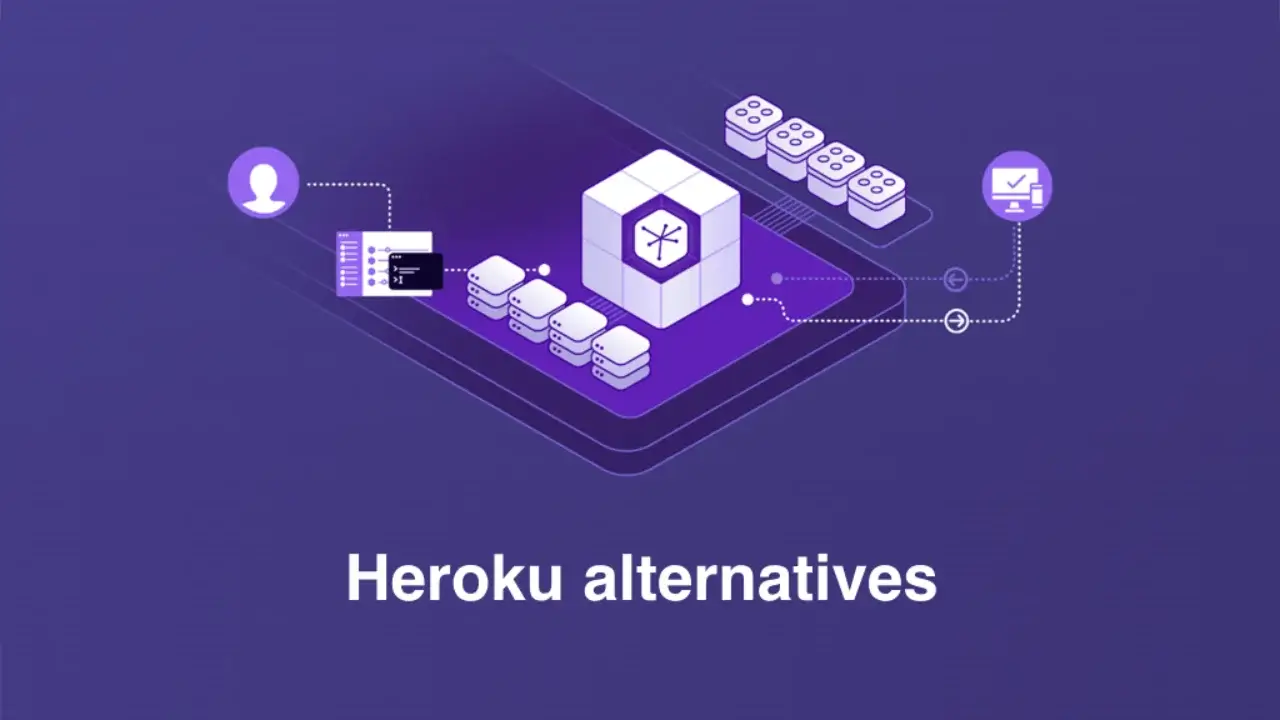
Future-Proofing Your Platform: Scaling, Speed, and Security in the Cloud Era
Introduction: The Infrastructure Trilemma Facing Modern Businesses
For small and medium enterprise owners, eCommerce managers, and digital agency leaders, infrastructure often feels like a necessary evil—a fixed cost or, worse, a crippling bottleneck. We’ve spent the last decade optimizing content, fine-tuning SEO, and perfecting conversion funnels, yet many organizations still rely on hosting architectures fundamentally unchanged since the early 2010s. The result? A perpetual struggle to balance three critical, often competing demands: **website speed**, robust security, and genuine **eCommerce scalability**.
This is the Infrastructure Trilemma. If you prioritize raw speed using highly optimized, but often brittle, monolithic servers, you sacrifice easy scaling and sometimes security isolation. If you prioritize complex, robust scaling solutions (like self-managed Kubernetes), you often introduce monumental operational complexity and cost. For the vast majority of businesses, especially those leveraging platforms like WordPress, Magento, or custom applications, navigating this choice is paralyzing.
In this analysis, we will delve into why legacy hosting models (shared servers, basic VPS) are failing the modern business test and examine how the emerging generation of managed cloud hosting platforms, built on simplified containerization standards, is finally providing a coherent, accessible solution to the trilemma. The stakes couldn't be higher: infrastructure is no longer a cost center; it is the ultimate competitive differentiator.
The Unrelenting Pressure of Performance: When Latency Becomes Lost Revenue
In the age of instant gratification, speed is synonymous with trust and competence. Google’s emphasis on Core Web Vitals (CWV)—metrics like Largest Contentful Paint (LCP), First Input Delay (FID), and Cumulative Layout Shift (CLS)—has fundamentally linked page experience with search ranking and conversion rates. For an eCommerce site, every millisecond shaved off the load time can translate directly into thousands of dollars in annual revenue.
The Limitations of Legacy Architecture
Traditional hosting often struggles with burst performance. When traffic spikes—a successful marketing campaign, a holiday rush, or even a sudden mention on social media—legacy Virtual Private Servers (VPS) typically hit CPU caps or suffer from I/O bottlenecks. They are designed for vertical scaling: adding more RAM or CPU to a single machine. While this works up to a point, it is incredibly inefficient and expensive.
- CPU Throttling: Unexpected traffic forces your application to wait in line, leading to terrible LCP scores and frustrating user experiences.
- Shared Resource Conflict: Even on dedicated VPS instances, underlying virtualization often means you are still contending for storage I/O bandwidth with noisy neighbors.
- Geographic Constraints: Legacy architectures struggle to deploy resources rapidly closer to the user, hindering optimization for global audiences.
The solution isn't just faster hardware; it's smarter resource allocation. Modern applications demand an environment that can treat resources elastically and dynamically, pulling compute power from a cluster instantly rather than waiting for a server reboot or complex migration.
The Escalating Threat Landscape: Why Security for SMEs Cannot Be an Afterthought
If speed is crucial for conversion, security is critical for survival. Small and medium enterprises are increasingly targeted because they possess valuable data (customer records, payment information) but often lack the robust security budgets and personnel of Fortune 500 companies. The risks range from data breaches and ransomware to crippling Distributed Denial of Service (DDoS) attacks.
Security in a Containerized World
One of the quiet advantages of migrating to modern, container-based infrastructure is the inherent increase in isolation and security posture. In a monolithic environment, if one application component is compromised, the entire server stack is at risk. Patches are manual, slow, and often fear-inducing.
Conversely, platforms built on CNCF containerization standards offer crucial security advantages:
- Isolation: Each application, or even components of an application (database, cache, frontend), runs in its own isolated container. A compromise in one container does not automatically provide access to the others or the host operating system.
- Immutable Infrastructure: Containers are designed to be immutable. If a container is compromised, it is simply destroyed and replaced instantly by a fresh, clean image.
- Faster Patching and Deployment: Security updates can be applied to the base image and deployed across all running instances via CI/CD pipelines almost instantaneously, significantly reducing the window of vulnerability.
Effective cybersecurity for SMEs is no longer about installing a robust firewall; it's about embedding security deep into the infrastructure layer, ensuring that the development and operations environment itself enforces isolation and rapid recovery.
The Imperative of Elastic Scalability: Preparing for Hyper-Growth
Every eCommerce manager dreams of the day their product goes viral, or their site gets featured in a major publication. That dream quickly turns into a nightmare if the infrastructure collapses under load. This is the challenge of **eCommerce scalability**: how do you handle a 50x surge in traffic without leaving money on the table or spending months over-provisioning hardware you only need for three days a year?
The Drawbacks of Vertical Scaling and Vendor Lock-In
Legacy cloud models often offer autoscaling, but true elasticity is often hampered by two factors:
- Vertical Limitations: Simply upgrading your single server to a larger size eventually hits a hardware ceiling and requires downtime.
- Storage Complexity: For traditional applications, scaling horizontally (adding more servers) is nearly impossible without complex, expensive shared storage solutions, or painful database replication setup. Applications require full native persistent storage that follows the compute instance, regardless of where it scales to.
True scalability means horizontal elasticity—the ability to spin up dozens of identical, load-balanced application instances within seconds and dissolve them just as quickly when the demand subsides. This model requires a sophisticated orchestration layer that handles routing, load balancing, and, critically, shared data volumes.
Solving the Trilemma: Introducing Simplified Stacks As a Service
The professional analysis of global cloud trends shows a clear trajectory: the underlying complexity of cloud infrastructure—Kubernetes, complex networking, highly optimized persistent storage arrays—is moving further away from the end user. Businesses don't need to manage the complexity; they need the *outcome* of that complexity: speed, security, and scalability.
This is where the concept of Stacks As a Service (StaaS) platforms, which abstract the intricate DevOps landscape, provides a powerful answer to the trilemma.
The STAAS.IO Approach to Infrastructure Abstraction
Consider the requirements of a modern digital agency managing 50 client sites, or an eCommerce business running a highly customized Magento or WooCommerce installation. They need an environment that:
- Delivers Kubernetes-Grade Performance Without the Management Overhead. The ability to scale containerized services across multiple physical machines seamlessly.
- Ensures Data Integrity and Mobility. Providing full native persistent storage and volumes that adhere to CNCF standards, ensuring that data is never tied to a single physical host and eliminating the fear of vendor lock-in.
- Offers Predictable Economics. Costs must remain clear whether scaling horizontally (adding more instances) or vertically (increasing resource allocation per instance).
Platforms like **STAAS.IO** exemplify this shift. They have engineered the complexity out of the system, offering an environment where building, deploying, and managing production-grade systems—from development to global scale—is performed with a developer experience focused on simplicity. You don't manage the underlying orchestration or the storage array; you manage your application. This simplification translates directly to business benefits:
4.1. Unlocking Speed Through Container Efficiency
By leveraging lightweight containerization, the overhead is drastically reduced compared to traditional VM-based hosting. This inherent efficiency ensures that your application spends more CPU cycles serving users and less managing the operating system, directly improving LCP scores and maximizing website speed. Furthermore, built-in CI/CD pipelines simplify deployment, meaning performance fixes and optimizations are pushed live faster.
4.2. Simplified Security and Compliance
When the platform handles the container orchestration and provides isolation guarantees based on industry standards, the burden of baseline security compliance shifts away from the SME. For businesses using **STAAS.IO**, the environment already enforces a high degree of isolation, adhering to best practices for containerization, significantly enhancing cybersecurity for SMEs that lack dedicated internal DevOps teams.
4.3. True Elasticity and Cost Control
The greatest anxiety around scaling is the unpredictable cost curve. When using a platform that simplifies Stacks As a Service, scaling becomes manageable. If your application needs to handle 10x the traffic instantly, the platform deploys 10 new instances, all sharing access to the robust, persistent volumes. Because the pricing model remains simple whether you scale wide (horizontal) or tall (vertical), the economics of hyper-growth become predictable. This is the backbone of reliable eCommerce scalability.
“The value proposition of modern Stacks As a Service is not just technical capability; it is the reduction of cognitive load. Businesses should focus on their core product—not managing complex infrastructure orchestration tools that require specialized, expensive talent.”
The Operational Shift: Why Managed Cloud Hosting Trumps Self-Management
For decades, the standard advice to highly technical companies was: 'If you want ultimate control and scale, build your own Kubernetes cluster.' This advice, while technically sound, is completely unworkable for the overwhelming majority of SMEs and digital agencies.
The Hidden Cost of Self-Management
Managing raw cloud infrastructure (even managed Kubernetes offerings from hyperscalers) requires deep expertise in networking, storage drivers, security policy management, and resource provisioning. This translates to:
- High Talent Acquisition Costs: Hiring and retaining senior DevOps engineers is expensive and highly competitive.
- Operational Overhead: Infrastructure maintenance, monitoring, patching, and incident response consume time that could be spent on product development or marketing.
- Vendor Lock-in Risk: Custom-built infrastructure often uses proprietary cloud features that make migration painful, trapping the business in a specific provider's ecosystem.
The market has clearly defined a need for platforms that deliver the power of modern cloud architecture—like the CNCF containerization standards used by **STAAS.IO**—but wrap it in a layer of simplicity. This is the essence of true managed cloud hosting for the modern application stack. The platform handles the complexity (orchestration, persistent storage, security isolation) so the business owner only interacts with a simplified deployment interface, CI/CD pipeline, and clear billing.
Conclusion: Infrastructure As a Competitive Asset
The Infrastructure Trilemma is real, and it is actively eroding market share for businesses that remain tethered to outdated hosting solutions. The cost of inertia is no longer just measured in downtime; it's measured in poor Core Web Vitals scores, abandoned shopping carts, and a lingering vulnerability to cyber threats.
The shift toward Stacks As a Service platforms represents the third wave of cloud evolution: moving beyond the raw compute resource (IaaS) and the basic application platform (PaaS), toward a fully managed, standardized environment optimized specifically for application development, deployment, and resilient scaling.
By choosing infrastructure that is inherently elastic, designed for high performance, and built on secure, isolated containers with reliable native persistent storage, SMEs and agencies can finally turn their underlying technology from a liability into a sustainable competitive advantage.
Ready to Eliminate Infrastructure Complexity?
If managing scaling, security patches, and persistent storage arrays is consuming resources that should be dedicated to growing your business, it’s time to rethink your infrastructure strategy.
Call to Action (CTA)
Stop managing servers, start building products.
Discover how **STAAS.IO** simplifies Stacks As a Service, offering a quick, affordable, and fully scalable cloud environment built on CNCF standards. Leverage our Kubernetes-like simplicity and full native persistent storage to future-proof your eCommerce platform, improve your Core Web Vitals, and ensure genuine eCommerce scalability without the unpredictable costs or vendor lock-in of traditional cloud providers.
Explore the simplicity of STAAS.IO today and deploy your first high-performance stack in minutes.




